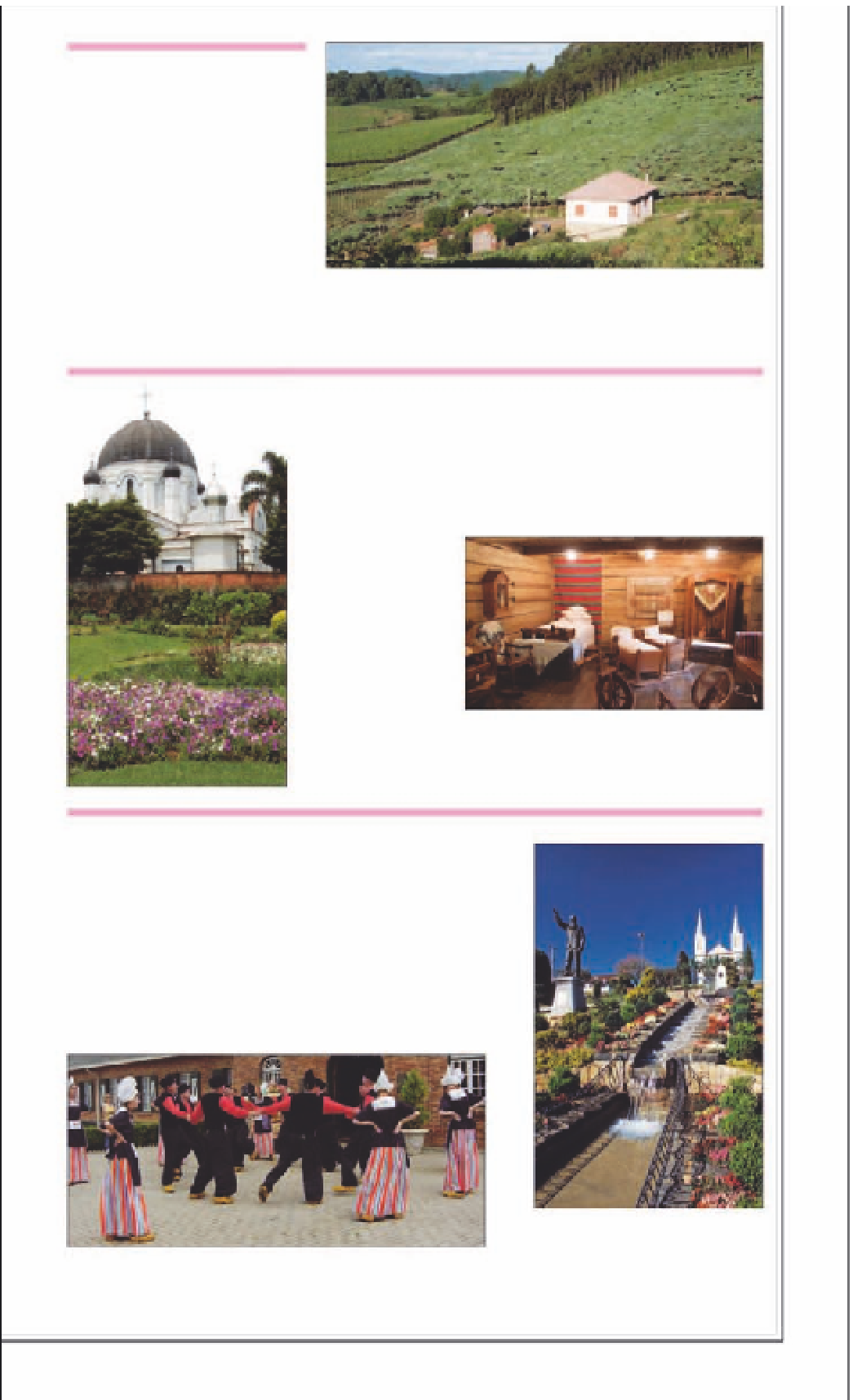Travel Reference
In-Depth Information
ITALIANS
The first Italian immigrants
settled in Rio Grande do
Sul in 1875, with tens of
thousands arriving there,
and in Santa Catarina and
Paraná, over the next 50
years. The vast majority
came from the northern
Italian provinces of Veneto
and Trento, introducing
rich culinary traditions
and the ability to cultivate
lucrative grape vines on
the steepest of hillsides.
Vineyards
in the Serra Gaúcha
(see p355)
have become as
much a part of the landscape as they are in Italy. These endless
stretches of lush greenery form the center-stage for the region's
wine production, known both in and outside Brazil.
SLAVS
Paraná is the state most closely associated with Slavic
immigrants from Central and Eastern Europe, with Poles
settling in and around Curitiba from 1869, Ukrainians in the
south-center of the state from 1895, and Russians around
Ponta Grossa in the early 1960s. The Ukrainians have been
especially successful in maintaining their ethnic identity.
São Josafat
, a
typical Byzantine-
style church in
Prudentópolis, is
easily recognizable
by its onion dome
features. The
Ukrainian Catholic
church is pivotal
in maintaining
Ukrainian identity
in Brazil.
A log cabin
, housed in the Museu da
Imigração Polonesa in Curitiba, is one of
the structures that were built by Polish
immigrants in the 19th and 20th centuries.
OTHER COMMUNITIES
At the beginning of the 20th century, Jews from Eastern
Europe founded agricultural communities in Rio Grande
do Sul. They later moved to Porto Alegre, establishing
Brazil's third largest Jewish community. In the 1920s and
1930s, many Japanese immigrants relocated to Paraná
from São Paulo, setting up coffee and soya farms.
Immigrants from other ethnic backgrounds were too few
to leave legacies. Some exceptions are the Austrians
who settled in central Santa Catarina in the 1930s, and
the Dutch who came to Paraná after World War II.
Praça Ministro Andreas Thaler
,
in Treze Tílias, is named for the
then Austrian Minister of
Agriculture, who founded the city
in 1933 for Austrian immigrants.
Castrolanda
, a Dutch settlement thriving on dairy and
agricultural products, mainly soya, continues to celebrate
its past in the traditional folk dances of the Netherlands.
































